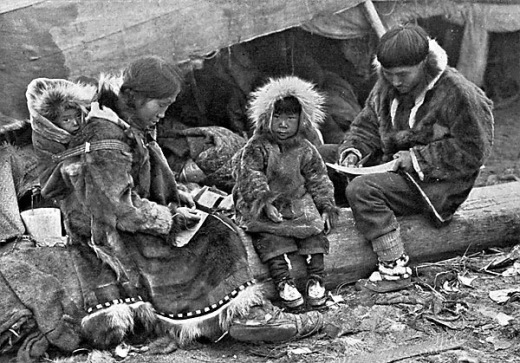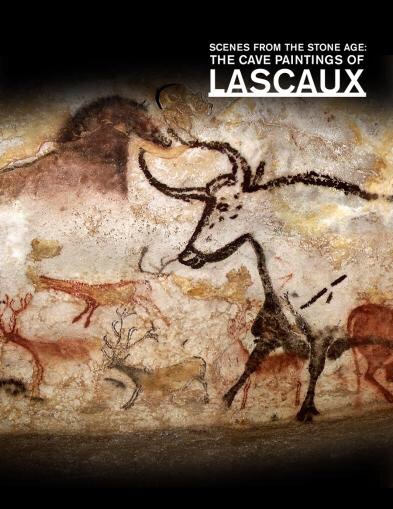In ancient times myths were used to explain away why bad things happened to people. Greek Mythology was known for representing why something happened, for example: the Greek god of the underworld, Hades, kidnapped Persephone the daughter of Demeter (goddess of growing things) for six months and this caused a change in the seasons.

(The Greek god Hades and his wife Persephone)
Myths often vilified animals implying they were the cause of bad things happening to people. Myths (ancient and European) played a large role in contributing to misconceptions about wolves.
Yet, it’s important to recognize a few ancient cultures that worshipped wolves as a good influence.
For instance in Japanese culture farmers left offerings of food by a wolf’s den because wolves guarded crops against foregoing deer and wild boar.

( photograph “Wild Boar” by Ohara Koson, 1877-1945 Japanese painter)
“Many Japanese once revered the wolf as Oguchi no Magami, or Large-Mouthed Pure God, but as Japan began its modern transformation wolves lost their otherworldly status and became noxious animals that needed to be killed. By 1905 they had disappeared from the country.” From the book, The Lost Wolves of Japan, Brett L. Walker (Author)

More on this book here: http://www.amazon.com/Wolves-Japan-Weyerhaeuser-Environmental-Books/dp/0295988142
In Eskimo/Inuit culture wolves and caribou were seen as one animal interdependent with each other.

An Inuit family, c.1917
Inuit creation story: The Wolf and the Caribou
“Inuit, the people of the North, take a different view of it. They have their own idea of why the wolf was created. In the beginning – so the legend says – there was a man and a woman, nothing else on the Earth walked or swam or flew. And so the woman dug a big hole in the ground and she started fishing in it. And she pulled out all of the animals. The last animal she pulled out was the caribou. The woman set the caribou free and ordered it to multiply. And soon the land was full of them. And the people lived well and they were happy. But the hunters only killed those caribou that were big and strong. And soon all that was left were the weak and the sick. And the people began to starve. And so the woman had to make magic again, and this time she called Amorak, the spirit of the wolf, to winnow out the weak and the sick, so that the herd would once again be strong. The people realized that the caribou and the wolf were one, for although the caribou feeds the wolf, it is the wolf that keeps the caribou strong.”
Read more here: http://www.polarlife.ca/Traditional/myth/wolf.htm
Japanese and Native American culture revere wolves as an animal necessary and vital for the survival of their cultures.
When did the wolf earn the “big bad wolf” vermin reputation?
History has it that: “Scientists say that man’s best friends originated in Europe. Researchers examined genetic materials, which pointed toward their origin from European wolves tamed by nomadic hunters and gatherers.” Read more here: http://www.scienceworldreport.com/articles/10930/20131115/dogs-evolved-wolves-tamed-european-hunters-19-000-years-ago.htm
Wolves gave mankind his best friend the dog. Yet, men continued to hate and fear wild wolves.

Learn more on Lascaux cave painting in France here: http://frenchculture.org/visual-and-performing-arts/events/scenes-stone-age-cave-paintings-lascaux
Myths about wolves came into being because nomadic cultures began to move towards settled villages and people become dependent on domesticated livestock. Therefore, these cultures became in conflict with wolves over a food source. Here comes the ” big bad Wolf.”

How old is Little Red Riding Hood and how did this fairy tale come into being?
Many anthropologists have debated this question. They have thought it originated in Asia, or it could be a Celtic tale. Read more on this from NG here: http://news.nationalgeographic.com/news/2013/11/131129-little-red-riding-hood-folktale-tehrani-anthropology-science/
This fairy tale, Little Red Riding Hood, is where all this hate and fear began towards wolves. Wolves become ” vermin” that men needed to wipe from the face of the earth. So it seems.

Photograph is: Tapestry depicting a Florentine wolf hunt (c. 14th century), Galleria degli Uffizi
Wolves were vilified.
During the Middle Ages wolves threatened the livelihoods of peasants. No wonder fairy tales such as the Three Little Pigs and Little Red Riding Hood were told over and over again at night to instill fear in little children.
As western culture spread (more like conquered) into the Americas this hate for wolves took hold. Pioneers moved westward wiping out anything that stood in their way.
Farmers feared wolves and the solution was to wipe them out. This fear of wolves took hold and by the 1950s wolves were all but wiped out in the lower 48 states, except for a small pocket in northern MN.
In modern times, Fairy tales were read to children at night that perpetuated the myth of the big bad wolf. Hollywood kept the wolf myth going in movies such as The Werewolf.
Who would want to go out into the woods at night after hearing such scary tales about wolves?
In the 70s wolves began to recover in my home state of Wisconsin and in the 90s I began working as a volunteer on the wolf recovery program. I had no qualms about being near wild wolves.
In Fact, have been out in the forest in the middle of the night on a wolf howl survey. Howled out to wolves on one warm summer evening in July and had a wolf ten feet away from my position howl back to me. Needless to say, I’m still here.

(Photograph belongs to owner)
One cannot begin to understand why one culture vilifies the wolf while another respects the role of the wolf on culture.
Western civilization wants control over all the land and wildlife: bringing the wild wolf into conflict with western man’s views about wilderness.
One culture worships the wolf as protector of the crops while another vilifies wolves as a thief in the night. Wolves gave us our best friend, dogs. We revere dogs for traits of loyalty that we love, and respect.
Wolves love and respect their families.
We put our trust in government agencies that are suppose to care for our wildlife. Yet, we allow fringe wolf hunters the right to kill wolves like vermin.
Wisconsin Department of Natural Resources calls this recreational wolf hunting for sport.

source


No comments:
Post a Comment